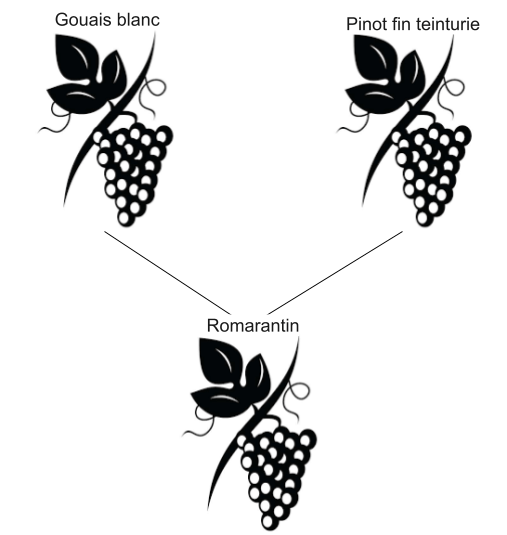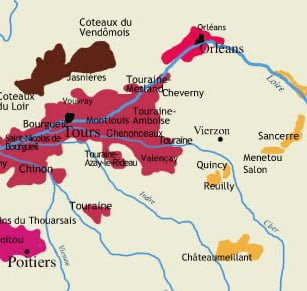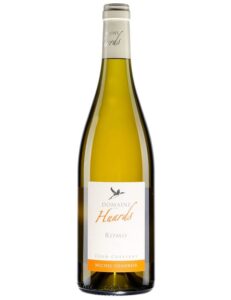The Forgotten “A-Lister” Wine Grape Of France
Being an aficionado of fine wines, I am continuously searching for obscure varieties of grapes which flourish in outstanding and favorable soil compositions, as well as advantageous climatic conditions. The Romorantin is one of these grapes which, despite its rarity, is becoming increasingly popular.
Before There Was Chardonnay
The Romorant grape, exclusive to the Cour Cheverny Appellation, is now better known by its alias name, Romorantin. It derives its name from the commune of the same name in the Loir-et-Cher Department in central France of the Loire Valley.
François I, King of France (1494–1547), was known to have held a lavish estate in the Loire Valley’s Cour Cheverny called Château de Chambord. The estate had 80,000 vines brought in from Burgundy in the 1300s.
Self-imposing, he invited popular Italian artists of the 16th century, most notably Leonardo da Vinci, to work on his hunting residence.
Romorantin, an esteemed grape, took refuge exclusively in Cour-Cheverny at some point and remained there ever since. However, it was not until the 17th century that Romorantin was first discovered in the Cher valley. The grape had once flourished throughout the Loire, yet its cultivation has since receded to the Cour-Cheverny AOC.
Romorantin’s Mythical Image
Romorantin is a white-skinned grape variety that is considered a sibling of the famous Chardonnay. It’s a cross between Pinot Noir, its philandering father, and Gouais Blanc, one of the world’s oldest white grape varieties. The Bio-type Pinot Fin Teintueir and his wife Gouais Blanc arose from the Middle Ages; Pinot from France and Gouais from Croatia, making it a sibling of well-known varieties like Chardonnay and Aligoté.

Romorantin’s Mythical Image
Romorantin is one of over 80 siblings produced by these promiscuous varieties. It depicts the final bridge connecting Touraine Chenin Blanc and Sancerre Sauvignon Blanc. Years of patiently understanding the potential of Romorantin are reversing its mysticism. It was once racing with searing acid that could eat the enamel of your teeth and slightly oxidative fruit.
Romorantin Reimagined
Presently, plantings have declined, where it’s almost exclusively planted in the eastern half of Touraine, now it can only be found in the village of Cour-Cheverny AOC. In 1993, Cour-Cheverny AOC, a 450-hectare area with various vines, was granted Appellation d’Origine Contrôlée (AOC) status.

https://www.paris-bistro.com/vin/vigne/aoc-cheverny-et-cour-cheverny
Though today, planting has extended to 24 other neighboring villages. Many wineries, such as Domaine Huards Romo, celebrate Romorantin even though the grape is difficult to ripen, which doesn’t make it economically practical for vignerons.
However, because of its high acidity, it is an excellent blending partner for reds and roses made from local Pinot Noir and Gamay varieties. White blends include Chardonnay, Sauvignon Blanc, and Chenin Blanc, the region’s most famous white variety. Romorantin is also a refreshing wine on its own, concentrated with lively orchard fruit and with exceptional aging potential. This is a one-of-a-kind, rediscovered treasure.
Step Into Romorantin Renaissance Of Today
Domaine des Huards has been in the Gendrier family since 1846 when Pierre Gendrier founded it. The family planted 10 acres of vines, predominantly Romorantin, in the 1950s. More parcels were planted in the 1960s when they began to focus solely on viticulture. Michael, the seventh-generation Gendrier, stopped using chemicals in the vines in the 1970s and transitioned to an organic and biodynamic approach, earning certification in 1998. His son Alex grew up with biodynamics and now works full-time at the Domaine alongside his father Michael, assisting in managing their 104 acres of vineyard, 91 acres of forestry, and sheep farms.

Domaine Huards Romo 2019
This wine is not only organic and biodynamic, but the soils are also unique, consisting of Miocene where Romorantin thrives, malolactic fermentation to round out the racy acid, and maturation on the lees to give the wine complex character. It delivers a delectable mix of citrus orange, ripe pear, honeyed apple, and apricot on the palate. At 12% ABV, its bright flavor is immediately inviting but will develop further over 20 years.
Romorantin, a grape that has persisted for centuries, demonstrates its worthiness through the wine it produces. Unheard of by many, it provides a delightfully rewarding experience for under $20. With its great ability to pair with an array of foods—seafood, steak, pasta, and more—it truly delivers an abundance of pleasure.
If you are looking for a unique wine to add to your collection, then the Romorantin grape is a great option
Ciao! I hope you enjoyed the article about Domaine Huards Romo 2019
Please comment below. I Love your feedback. Thank you and remember Taste Small Live Big!
Follow me on Instagram@epicurean.angel

